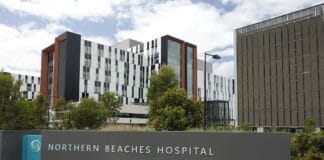Frances Usherwood works as a clinical nurse educator in a Paediatric hospital, and is a NSW Nurses and Midwives Association delegate and branch assistant secretary. Below is part of her speech to a Solidarity meeting in Sydney recently:
The Commonwealth government is talking about introducing a $6 Medicare co-payment for GP visits. This means the end of free at the point of service health care.
Co-payments to see a doctor simply mean some families will have to choose between taking a sick child to the GP or other essentials like groceries or household bills.
It also is very easy to assume that this $6 is just the beginning and horrific to think about what that cost will be in five, ten or 20 years.
Brett Holmes, the nurses and midwives union general secretary spoke at a “Save Medicare” rally [in February]. He said:
“We need all Australians to be crystal clear about what is going on here. We are witnessing the first stages of ‘death by a thousand privatisations’ of the public health and Medicare system Australians hold so dear”.
We do not want a private health system in Australia. The inequalities in health caused by the two-tired system are already apparent.
This is obvious in instances such as medical centers not bulk billing, patients with private health insurance getting priority treatment for elective surgeries and people without insurance finding it too expensive to visit specialists when needed.
An Australian Bureau of Statistics survey found that about 10 per cent of adults referred to a specialist delayed or didn’t keep the appointment because of cost.
We do have a safety net with prescriptions, however a high number of patients with chronic illness never reach the PBS safety net because they cannot afford the co-payments on earlier prescriptions.
The NSW government has already announced the full privatisation of disability care in NSW and right across the state we are seeing new mental health facilities being handed over to non-government operators.
This means that as a state we are privatising the care of what could be called the two most vulnerable groups in our society.
The NSW Government also plans to hand the new “public” hospital at French’s Forest over to private operators.
This will create a hospital that has a public and private Emergency Department, and public and private beds. So if two patients present with the same condition, suddenly the private patient is the sickest and deserves hospital stay?
Last year, the journal the Australian Doctor published an article that further discussed inequalities in our current health system.
They found that most private specialists do not bulk bill, and because the poor can’t afford to pay gap fees in the first place, less than 4 per cent of Extended Medicare Safety Net benefits go to the 20 per cent most socioeconomically disadvantaged members of our population.
In contrast, over 50 per cent of benefits are distributed to the most advantaged 20 per cent. This is an absolute disgrace.
Another recent Australian study reported that of people living with advanced chronic obstructive pulmonary disease, 78 per cent experienced economic hardship from managing their illness, with 27 per cent unable to pay for medical or dental expenses. Thirteen per cent of Australians over the age of 40 suffer from this disease.
Pressure on Emergency Departments
The other issue that will be created by a $6 levy is increasing pressure on our Emergency Departments (ED).
Working in the public hospital system and seeing the agitation and increased illness caused by people waiting in our EDs, or being moved to a less acute area too quickly, so the ED staff can cope with the influx of patients, is dangerous and distressing.
And this change to Medicare by the Abbott government will only make things worse. If you do need to see a doctor, something a GP can manage, but you don’t have $6, where would you go?
I’m sure you all heard about the teenage girl last year who spent nine hours on the floor of a overcrowded emergency department, suffering from excruciatingly painful appendicitis. After nine hours her mum took her home, and brought her back to ED the next day.
She could have died while at home. The hospital she was in has one of the longest wait times in the state, taking an average of 22 hours and 29 minutes to be moved or discharged from ED.
Despite an official “target” of four hours, these are the statistics we are still looking at and we can safely assume this will only get worse.
This four hours is important as your risk of dying in ED increases after the four hour mark. According to the Medical Journal of Australia, since establishing the national target time there has been a 13 per cent fall in patient deaths in emergency.
We, members of the health care profession and the community must fight to defend affordable health care, we must highlight the inequalities that exist in our two tiered system.
We must fight against further privatisation and the co-payment plan and protect Medicare from the forces that aim to turn it into an American-style profit making machine.





